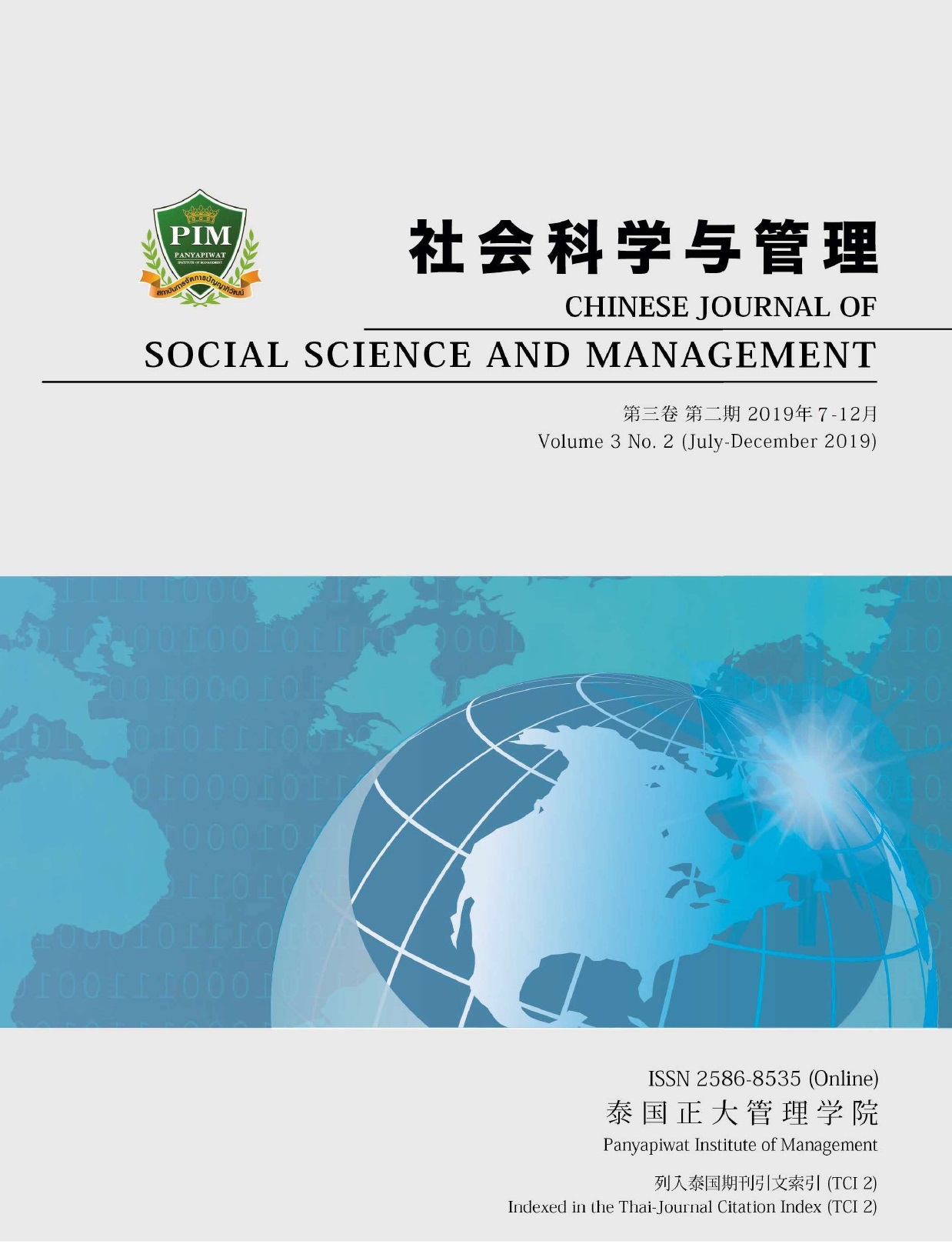RESEARCH ON THE IMPACT OF ANTICIPATED REGRET ON IMPULSE ONLINE SHOPPING: A CASE STUDY OF STUDENTS FROM NJUPT
Main Article Content
Abstract
Online shopping has become a common way for people to conduct their daily shopping, and therefore, scholars have conducted numerous research studies on the behavioral characteristics of consumer network purchase intention, especially impulse purchases. At present, the academic research is mainly focused on the analysis and formation mechanism of the research factors of impulse purchases, and few studies have examined the impulse purchase with regard to the aspect of regret, although the influence of the regret factor increasingly restricts the development of electronic commerce. Moreover, university students’ consumption has obvious impulse characteristics. Taking students enrolled at NJUPT as the research subjects, this paper sets regret as a propositional variable with the objective to study the impulse purchases of online shopping. Based on the research results, it can be concluded that the effects of expected regret in different aspects on impulsive online shopping are significant. It is revealed that regret has a significant influence on the impact of online shopping commitments with regard to consumers’ impulsive online shopping, which has no significant influence on the impact of other people’s evaluation of impulsive purchasing but has a significant impact on individual impulse purchases.
Article Details
Chinese Journal of Social Science and Management Editorial Division
The Office of Research and Development, Panyapiwat Institute of Management
85/1 Moo 2, Chaengwattana Rd., Bang Talat, Pakkred, Nonthaburi 11120, Thailand
Tel. 02 855 01048 E-mail: cjssm@pim.ac.th
References
Adelaar, T., Chang, S. & Lancendorfer, K. M. (2003). Effects of medial formats on emotions and impulse buying intent. Journal of Information Technology, 18(4), 247-266.
Baumeister, R. F. (2002). Yielding to Temptation: Self-control Failure, Impulsive Purchasing, and Consumer Behavior. Journal of Consumer Research, 28(4), 670-676.
Baumgartner, H. & Steenkamp, J. B. E. M. (1996). Exploratory Consumer Buying Behavior: Conceptualization and Measurement. International Journal of Research in Marketing, 13(2), 121-137.
Beatty, S. E. & Ferrell, M. E. (1998). Impulse buying: Modeling its precursors. Journal of Retailing, 72(2), 169-191.
Bitner, M. J. (1992). Services capes: The Impact of Physical Surroundings on Customers and Employees. Journal of Marketing, 56(2), 57-71.
Dholakia, U. M. (2000). Temptation and resistance: An integrated model of consumption impulse formation and enactment. Psychology & Marketing, 17(11), 955-982.
Dittmar, H., Beattie, J. & Friese, S. (1995). Gender identity and material symbols: Objects and decision considerations in impulse purchases. Journal of Economic Psychology 16(3), 491-511.
Dittmar, H., Beattie, J. & Friese, S. (1996). Objects, decision considerations and self-image in men’s and women’s impulse purchases. Acta psychological, 93(1), 187-206.
Johar, G. (2003). Tempted or Not: The effect of Recent Purchase History on Responses to Affective Advertising. Journal of Consumer Research, 33(4), 445-453.
Kopp, C. B. (1982). Antecedents of self-regulation: A developmental perspective. Developmental Psychology, 18(2), 199-214.
Lichtentein, D. R. & Bearden, W. O. (1989). Contextual Influences on Perceptions of Merchant-Supplied Reference Prices. Journal of Consumer Research, 16(1), 55-66.
Lin, J. H. & Zhuang, S. J. (2005). Antecedents and Consequences Model of Impulse Purchases in Consumer Behaviors, Business Administration Science and Technology Quarterly, 3(6), 47-68.
[in Chinese]
Lucas, M. & Koff, E. (2017). Body image, impulse buying, and the mediating role of negative affect. Personality & Individual Differences, 105(2), 330-334.
Peck, J. & Childers, T. L. (2006). If I touch it I have it: Individual and environmental influences on impulse purchasing. Journal of Business Research, 59(6), 765-769.
Pentian, I. (2008). Exploring effects of online shopping experiences on browser satisfaction and e-tail performance. International Journal of Retail & Distribution Management, 39(10), 742-758.
Piron, F. (1991). Defining Impulse purchasing. Advances in Consumer Research, 18(1), 509-514. Rook, D. W. & Fisher, R. J. (1995). Normative Influences on Impulsive Buying Behavior. Journal of Consumer Research, 22(3), 305-313.
Sengupta, J. & Zhou, R. (2007). Understanding Impulsive Easters’ Choice Behaviors: The Motivational Influences of Regulatory Focus. Journal of Marketing Research, 44(2), 297-308.
Watson, D. & Hubbard, B. (2010). Adaptation Style and Dispositional Structure: Coping in the Context of the Five-factor Model. Journal of Personality, 64(4), 737-774.
Weinberg, P. & Gottwald, W. (1982). Impulsive consumer buying as a result of emotions. Journal of Business Research, 10(1), 43-57.
Wen, H. J. (2004). M-commerce operation modes and applications. International Journal of Electronic Business, 2(3), 301-315. [in Chinese]
Yang, K. (2012). Consumer technology traits in determining mobile shopping adoption: An application of the extended theory of planned behavior. Journal of Retailing & Consumer Services, 19(5), 484-491. [in Chinese]
Yi, S. & Baumgartner, H. (2011). Coping with guilt and shame in the impulse buying context. Journal of Economic Psychology, 32(3), 458-467.
Yi, S. (2012). Shame-Proneness as a Risk Factor of Compulsive Buying. Journal of consumer Policy, 35(3), 393-410.


